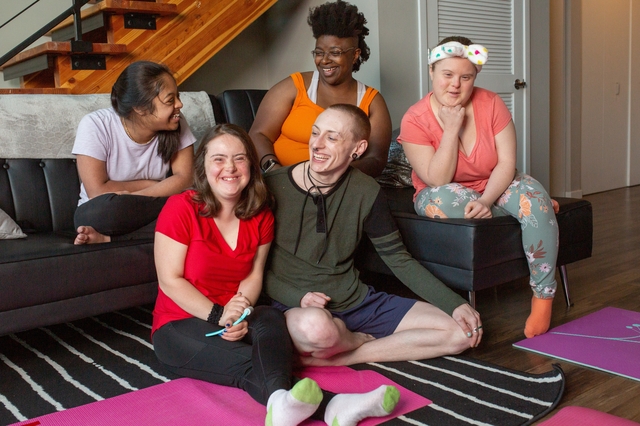Understanding Intellectual and Developmental Disabilities
Nov 20, 2024
By: Benjamin Walle, People Inc. Digital Marketing Coordinator
Intellectual and Developmental Disabilities (IDD) is actually an umbrella term for a range of conditions affecting a person's cognitive functioning and adaptive behavior. These disabilities are usually first noticed during the developmental period of life and can impact a person's ability to learn, communicate, and even engage with the world around them.

A developmental disability occurs before the age of 22 and affects development in one or more of the 5 Areas of Human Growth and Development:
- Physical Development: Refers to the growth of the physical body and muscle processes, which can be influenced by genetic, environmental, and emotional factors.
- Sensorimotor Development: Involves the 5 senses—sight, sound, smell, touch, taste—and the ability to interpret and react to sensory input. Physical, cognitive, and environmental factors all play a role here.
- Cognitive Development: Encompasses intellectual abilities. While genetic origins may impact this, social, physical, and environmental factors also contribute.
- Language Development: Relates to communication abilities and is influenced by social, emotional, cognitive, and physical factors.
- Social Development: Involves forming social skills through family interactions and social experiences. This development is impacted by a blend of emotional, cognitive, and environmental factors.
IDD includes 8 classifications of developmental disabilities:
1. Down Syndrome
A genetic condition caused by an extra chromosome 21, leading to developmental and intellectual delays, as well as distinct physical features.
2. Autism Spectrum Disorder (ASD)
A range of neurological conditions characterized by challenges in social communication, repetitive behaviors, and a strong preference for routines.
3. Cerebral Palsy
A condition that affects muscle tone, movement, and motor skills due to damage in the developing brain, often occurring before or during birth.
4. Intellectual Disability
Characterized by limitations in intellectual functioning and adaptive behaviors such as problem-solving, social skills, and daily activities.
5. Epilepsy
A neurological disorder marked by recurrent, unprovoked seizures. Seizures vary in type and severity and may impact cognitive functioning and learning.
6. Prader-Willi Syndrome
A genetic disorder affecting physical, cognitive, and behavioral development, often characterized by a chronic feeling of hunger and intellectual delays.
7. Neurological Impairments
This broad category covers any condition that affects the nervous system, impacting learning, movement, and other functions, with each impairment varying widely in its effects.
8. Familial Dysautonomia
A genetic disorder affecting the autonomic nervous system and sensory responses, leading to issues with bodily functions, such as blood pressure, temperature regulation, and pain perception.

Yes, people living with IDD often face harmful stereotypes and misconceptions. These misunderstandings can often lead to stigma, preventing them from accessing the same opportunities for independence as everyone else.
Let's address some common misconceptions:
Misconception #1: “Intellectual and Developmental Disabilities mean a lack of intelligence."
Intelligence isn’t determined only by cognitive abilities. People with IDD have unique skills, talents, and valuable perspectives that should be celebrated.
Misconception #2: “IDD is rare.”
Developmental disabilities are more common than you may think. Around 1.1 million people in New York State live with an IDD, representing millions globally. Their contributions to society are vast, and it’s essential to ensure they have equitable access to support.
Misconception #3: “People with IDD are always dependent.”
Many people with IDD are quite independent. With the right support and accommodations, they lead full lives and make significant contributions to their communities.
Misconception #4: “People with IDD don’t want to socialize.”
This is far from the truth. Many people with IDD enjoy social connections and benefit greatly from positive interactions with family, friends, and community members.
Misconception #5: “People with IDD cannot work.”
Many people with IDD are capable of and enthusiastic about working, often bringing dedication and unique perspectives to their roles. With appropriate support, they contribute meaningfully to the workforce.
Misconception #6: “IDD is only a medical issue.”
IDD encompasses much more than just medical aspects. It impacts many areas of life, including social inclusion, education, employment, and relationships, and requires a holistic approach to support and care.
By understanding these conditions, we can foster a society that embraces disability inclusion and help provide the support networks necessary for people to thrive. Let's create a world where people with IDD feel respected, included, and empowered to live their best life.
 People Inc.
People Inc.